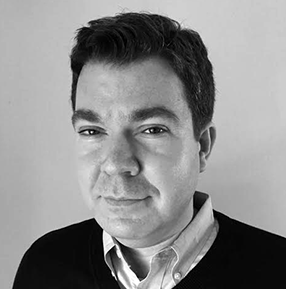Come Back to Tell Us
Dusk in August—
which means nearly
nine o’clock here, deep
in the heart of central
Jersey—and the deer
step out to graze
the backyards. They tear
each yellowy red
tulip cup, munch up
rhododendrons
and azaleas. Fifty
years of new houses
have eaten into
their woodland, leaving
only this narrow strip
of trees along the trickly
stream that zigzags
between Route 9
and Lily’s mom’s
backyard. The deer rise
from the mist, hooves
clicking on asphalt, a doe
and a buck, his antlers
like a chandelier.
Sometimes a doe and two
fawns. Or else we see
just the white flags
of their tails bobbing away
into the dark. In theory
the DNR should come
catch them, let them go
where it’s still
forest, still possible to live
as they were meant to.
But these days
there’s no money
for that. And people keep
leaving out old bread,
rice, stale cookies, or else
plant more delicious flowers.
“Mei banfa,”
my mother-in-law says:
Nothing can be done.
Seeing them in
the distance—that distance
we can’t close
without them shying
and turning and skittering
down Dickinson Lane
or bounding
over a backyard fence—
I try to imagine
they’re messengers
come back to tell us
their stories, any news
of the lost or what
comes next, though
if they could say
anything, they would
probably say, Go away.
Copyright © 2016 by Matthew Thorburn. Originally published in Poem-a-Day on August 1, 2016, by the Academy of American Poets.
“‘Come Back to Tell Us’ is part of a book-length poem called Dear Almost, which takes place over the course of a year, from one spring to the next, and is addressed to an unborn child lost in a miscarriage. I was fascinated to learn that, according to Shinto beliefs, deer are considered messengers of the gods—and images of deer, along with the deep wish to send a message to our lost one, figure throughout the poem. Speaking of learning, years ago when my wife and I first started dating, I discovered that all the streets in the neighborhood where she grew up were named after poets—Dickinson Lane, Longfellow Terrace, Sandburg Drive—which seemed like another kind of message from the gods.”
—Matthew Thorburn

